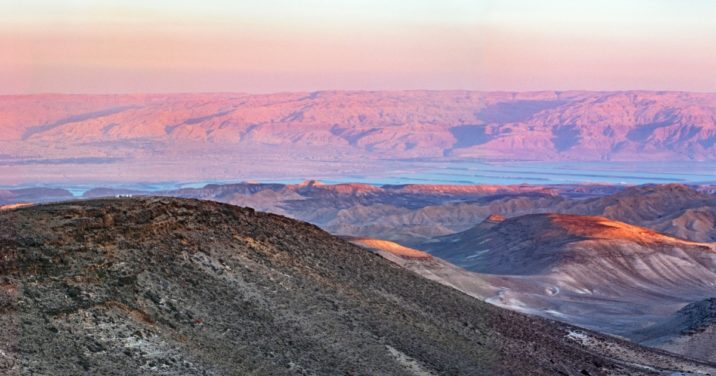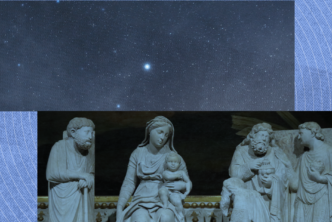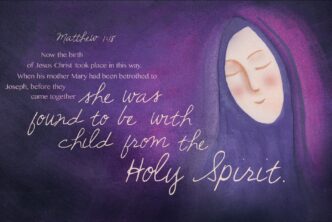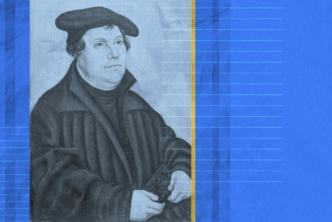Howard Marshall remarked that compared to the parts of the Bible which “can be recognised to be among the great literature of the world … One cannot attribute this level of religious or literary insight to the composer of the some of the genealogies.”1 How these Bible genealogies form the structure for Genesis is a matter of constant debate, and yet those who hold that the Pentateuch is a literary whole have yet to explain how the genealogy of Levi in Exodus 6:16 or Numbers 3:1 should inform their views.2
Work has been done over the past decade on the function of these genealogies as a structuring device whereby Jason DeRouchie has distinguished between asyndetic (those lacking the conjunctive ו) and conjunctive toledots (genealogies introduced by the phrase “These are the generations of”). In DeRouchie’s assessment, asyndetic formulations form major subject headings while those with the cojunctive ו are minor sub-units coordinated with their respective asyndectic major toledot heading.3
Jared August has noted that these particular major units always include a promise which is realized in the following toledot section.4 David Cooper, building on the works of DeRouchie and August, has sought to perform a narrative analysis whereby these macrostructural units include four distinct plot elements (a threat to the promise, hope of resolution, the “promise extended to the subject of the next main toledot,” and a restatement of that promise.5 However, all three base their thematic descriptions of the toledot solely on the “seed” theme along the lines of election.6 Though this is an attractive option, this article will contend that the genealogies are inherently tied to the quest of arable land, preceding or succeeding a development in that theme for the participants introduced in the genealogical lists, serving as the clear literary boundary markers for the entire pentateuchal narrative. This will be shown in three ways.
Bible genealogies are repetitive
The genealogies are an example of repetition. As such, they build cohesion so that “listeners to predict what a speaker is about to say, to utter the predicted words and then to receive confirmation of their prediction either through exact repetition or near-repetition or in the form of a relexicalization.”7 Therefore, the first instance of the formula is seen as the lens through which later instances are interpreted, similar to discussions on typology.8 This first toledot is asyndetic and is therefore a major heading in the work.9 Genesis 2:4 begins with: “These are the generation of the heavens and the earth when they were created, in the day that the LORD God made the earth and the heavens.” The term is derived from the hiphil form of ילד and therefore, it speaks of physical progeny.10 DeRouchie notes that this first occurrence is “the only toledot catchphrase in all of Scripture wherein the progenitor of the toledot is something other than a named human person. Genesis 2:4—4:26 stands out in this regard” and hypothesizes that this formula was appended to the creation narrative as a deliberate imitation of the successive formulas in agreement with Garrett.11 This statement is profound and of magnanimous import. If the original narrative of creation was not part of an original genealogical source list and therefore lacked this introductory formula, then its inclusion is highly intentional and justifies giving this section a prominent place in theologizing: “The toledot formula begins with a verbless clause and serves to identify something—namely the heavens and the earth, and the lexical form denotes that the heavens and earth will produce an offspring.”12 Therefore, the initial progenitors are the heavens and the earth. These two entities will cohabitate to form an offspring, namely Adam, as “the LORD God formed the man of the dust from the ground and breathed into his nostrils the breath of life” (Gen 2:7 ESV). However, Sailhamer notes that this section “begins with a description of the condition of the land (hāʾāreṣ) before the creation of man.”13 Heavens and Earth are lexically emphasized as the progenitors, and the condition of the land is highlighted before the creation of the human being. The creation account in Genesis 1 spoke of man being made in God’s image, while Genesis 2 speaks of man being formed from the ground. Both accounts emphasize mankind’s relationship to land.14
Sailhamer also notes that, “Man’s origin was the dust of the ground. One can also see in this picture of man’s origin an anticipation of his destiny in the Fall, when he would again return to the “dust” (ʿāp̱ār, 3:19). In Creation man arose out of the dust, but in the Fall he returned to the dust. Thus the author graphically pictures the contrast between the work of God and the work of man.”15 Because of this, one can legitimately view earth as the mother of mankind, whereby the mother is the passive recipient of the Heavenly Father’s action in bringing forth a child.16
The curse emphasizes land
Secondly, the curse is more focused on the effects on the land than it is on the seed. The curse given to Adam, who is the literarily dominant character as vice-regent with authority over Eve, deals solely with land. “Cursed is the ground because of you. … thorns and thistles it shall bring forth for you. … you return to the ground. … out of it you were taken. … you are dust … to dust you shall return” (Gen 3:17–19). The primary conflict in Genesis 3 is the defilement and expulsion from the land due to man’s sin and attendant death; the remedy is the seed of the woman. Though death is surely problematic as a conflict, the rest of the Pentateuch seems to focus solely on issues of land, accepting death as a foregone conclusion.
While some have recently proffered the thesis that the saving faith of the Old Testament was based on the hope of a coming seed to justify their elevation of the protoevangelium, this does not match up with the creedal formulation of the Pentateuch (Deut 26:5–10). This toledot emphasizes earth’s participation in the creation of mankind, though it be passive as well as the receipt of a certain pristine land in which mankind enjoys the manifest presence of יהוה, the conflict results in expulsion from that pristine land and death outside of that land. The first murder likewise results in expulsion from land. If the Pentateuch is viewed as a singular book, the major conflict in that work seems to be wholly concerned with the receipt of the land grant of Canaan. Everything is moving towards that goal, and the confessional formula which the Israelite faith was expressed yearly in Deuteronomy expressed their confession of faith in the Lord God who brought them into that land—not the Lord God who rose up a seed. The theme of a seed is more developed in the prophets than the Pentateuch and should not be read backwards into the Pentateuch.
Deliberate land developments by major characters
Finally, there is a deliberate use of the Bible genealogies regarding the land theme throughout Scripture. The paradigmatic toledot of the heavens and earth describes the arrival of Adam in the arable land of Eden (2:4–4:26), while Adam’s toledot describes the results of the proto-family’s expulsion from the land causing them to be wanderers (5:1–6:8). Likewise, Noah’s toledot prepares the reader for the destruction of all the land where Noah and his family will become the lone inhabitants after they are forced into temporary exile on the ark (6:9–9:29). The second toledot of Noah describes Noah’s expulsion from the ark and the whole earth dispersing from there (10:1–11:9). Shem’s toledot describes the second disbursement of humanity from Babel (11:10–26), as does Terah’s as he wanders from Ur to Haran (11:27–32).
The Terah narrative, however, does not leave Terah as the main participant, and the expulsion is now met with a specific divine intention of blessing as opposed to those previous toledots which surrounded judgment. Within the Terah narrative, it is announced that Terah desired to go to Canaan, and yet never reached that land (11:31). Terah’s account leaves his son Abram to finish what he started at the divine command of YHWH. Abraham receives a promise of descendants and land, providing the literary significance of these genealogies and their attendant travelogs. The toledots of the primeval history thus begin with placement of man in an idyllic land, and it ends with the continued expulsion of humans from that land until the institution of the Abrahamic covenant, which comes in the midst of the Terah toledot. Upon the Abrahamic covenant, a new idyllic land is promised as a land grant, at the behest of an ANE Suzerain to a vassal.17 This promise will drastically reshape the reader’s mental representation of all future instances of the toledot formula.
All remaining toledots of Genesis are concerned with Abraham’s descendants and evince a new alternating pattern. Abraham’s toledot describes his dying in the land of God’s promise, while the succeeding toledot describes Ishmael’s departure from the land of Abraham to a different land allotted him by God.18 Following Ishmael, the promised descendant Isaac’s toledot shows him remaining in the land which he too was promised, while his brother Esau whose toledot follows leaves the land of Canaan to a land God would give him.19 Jacob’s toledot is particularly ironic since he departs from Canaan to a land which he was ordained to go and suffer, but is buried in the land of promise so that he will forever remain in Canaan. The toledots after the covenant with Abraham are limited to Abraham’s progeny, and each major participant of that toledot is awarded a specific land grant. However, it is important to note that there is a distinction made between an elect line, through whom that promise arrives remaining in Canaan, and the unelected line departing Canaan. The elect line has the land grant of Canaan, while the unelected line is granted land outside the borders of Canaan. If this pattern is significant, then the toledot of Levi should end with the major participants at the end of the genealogy leaving the land for Canaan as members of the elect line. That is in fact exactly what is seen in the book of Exodus.
The only other occurrences of toledots in the Hebrew Bible are found in Numbers 3:1 and Ruth 4:18, and 1 Chronicles 1:29—at which point it becomes clear that the pattern has changed again. In Numbers 3:1, the people are still at Mount Sinai and will be commanded to leave there and journey towards the promised land which they fail to possess. In Ruth, there is an emphasis throughout the book on the departure of certain Israelites from the land resulting in devastation, and their return to Canaan resulting in blessing and initiating God’s new redemptive work culminating in David the king.20
Therefore, the alternating pattern in Genesis remains through Exodus, but ironically changes in Numbers with Levi’s second toledot, only to return to the expected pattern of remaining in the land in Ruth. Because of this lone example, and the narrative effect of Numbers, this departure from the pattern seems to be an ironic foreshadowing of the Israelite’s subsequent failure.
Conclusion
Toledots primarily serve to introduce/reintroduce participants/characters, and often serve as deictic markers allowing for the passage of vast amounts of time between the old participant, which the toledot begins with, and the new participant with which the toledot ends (thus establishing setting).21 The toledots will also, though not always, encode various information through direct speech and narration serving important rhetorical and sometimes ironic roles in the narrative (thus serving as peak devices/rising actions/climactic markers).22 However, the fact that the toledots are always in close proximity, either immediately preceding or immediately following a development in the arable land theme (thus providing some measure of narrative exposition), has hitherto been undeveloped.23
If these summaries are correct, the toledot pattern shows God’s people and their relationships to land. The primeval history, a narrative tragedy, is a continuous cycle of disbursement from the land so that people are forced to wander in judgment. With the advent of Terah and the Abrahamic promise, people groups are now granted specific territories of land to which they must travel or remain. The author of the Pentateuch typically rotates this pattern of disbursement and settlement until the very last instance in Numbers, whereby the author portends a failure to enter the land before the end of his lifetime. In this way, Moses and Aaron, as the major participants in the toledot of Levi, are portrayed as new Noahs, men with two toledots, delivering their families from grave danger as the judgment of God was unleashed on their surrounding neighbors, only to die outside of the land of promise in shame.24
Exodus however does not reach that terrible omen, and holds forth a message of hope that God’s people will travel towards the land of promise.25
Because the pattern of the toledot form has a clear emphasis on disbursement and judgment in the primeval history, the Abrahamic covenant shows a redemptive effect that upends the pattern drastically affecting all subsequent toledots. The Abrahamic covenant adds certain historical background which is critical to interpreting the narrative function of the proximity between land and toledot, since all toledots subsequent to the Abrahamic promises involve a land grant, which was the prerogative of an ANE suzerain. Since the book of Exodus shows an emphasis on covenants, seen at Sinai, crudely modeling the form of a Hittite treaty, it is proper to see these toledots as having covenantal implications. The toledot of Genesis expounds the first covenant with mankind in the Pentateuch and included a land in the garden of Eden; it was lost so that man was forced to wander (Gen 3:24). All subsequent primeval toledots emphasize the results of this loss. With Noah a new covenant is struck, but no particular land is promised so that Noah and his descendant too wander eastward.26
However, with the advent of Abraham, a new covenant with a new land grant is given, and the book of Exodus moves towards the realization of that covenantal stipulation upon the Suzerain.
***
Further resources

Where Sin Abounds: The Spread of Sin and the Curse in the Book of Genesis with Special Focus on the Patriarchal Narratives
Regular price: $18.99

These are the Generations: Identity, Covenant, and the Toledot Formula
Regular price: $22.95
The Tomb of Jesus and His Family? Exploring Ancient Jewish Tombs near Jerusalem’s Walls
Regular price: $37.99
- I. Howard Marshall, Biblical Inspiration (Vancouver: Regent College Publishing, 1982), 23.
- Bruce K. Waltke and Cathi J. Fredricks, Genesis: A Commentary (Grand Rapids, MI: Zondervan Academic, 2012) base their commentary on toledots, but others like Goldingay, Genesis (Grand Rapids, MI: Baker Academic, 2020), v–vi, opt for a tripartite structure with a prologue of primeval history, two major sections of patriarchal narratives and the story of Joseph. Those who hold toledots as important framing devices like John Sailhamer, The Pentateuch as Narrative (Grand Rapids, MI: Zondervan, 1992), 2, notes that the Pentateuch is a single work, and yet when speaking of Moses’s toledot, fails to mention the difference between toledot genealogies and non-toledot genealogies, instead mentioning only the authors “concern to give the lineage of the central characters of the narratives” (251).
- Jason S. DeRouchie, “The Blessing-Commission, the Promised Offspring, and the Toledot Structure of Genesis,” Journal of the Evangelical Theological Society 56 (2013): 223–34.
- Jared August, “The Toledot Structure of Genesis: Hope of Promise,” Bibliotheca Sacra 174 (September 2017): 267–82.
- David E. Cooper, The Macroplot of Genesis as Structurally Developed through Episodic and Toledot Contributions: An Intersection of Discourse Analysis and Plot Analysis,” Theological Research Exchange Network 144:47 (2021)
- DeRouchie, “Blessing-Commission,” 247, 275, 278–79; Cooper, “Macroplot of Genesis,” 390.
- Paula Buttery and Michael McCarthy, “Lexis in Spoken Discourse,” in The Routledge Handbook of Discourse Analysis, edited by James Paul Gee and Michael Handford (Milton Park: Routledge Publishing, 2013), loc. 293, Kindle edition.
- Walter C. Kaiser Jr. and Moises Silva, Introduction to Biblical Hermeneutics (Grand Rapids, MI: Zondervan, 1994), loc. 1994, Kindle edition, state: “A type must concern itself not with words but with historical facts such as historical persons, events, or institutions. A type must show evidence of divine designation in the text. A type must show agreement of fundamental principles, patterns, and structures rather than parallels in details. A type usually focuses on God’s direction of history. Typology can point out the basic correspondences that exist between the Testaments in God’s providential interventions into space and time.” In the case of Bible genealogies, the participants are presented as historical persons. The repetition in Matt 1:1–17 and Luke 3:23–38 shows a divine designation and follows a clear pattern, and happens around major junctions in God’s direction of history.
- DeRouchie, “Blessing-Commission,” 237.
- Walter Baumgartner and Ludwig Köhler, The Hebrew and Aramaic Lexicon of the Old Testament, 2 vols., unabridged ed. (Leiden: Brill, 1995), II:1177–78.
- DeRouchie, “Blessing-Commission,” 243–44.
- DeRouchie, “Blessing-Commission,” 224, citing Francis Anderson’s notes that verbless clauses with a definite subject and predicate serve as clauses of identification.
- John Sailhamer, “Genesis,” in The Expositor’s Bible Commentary: Genesis, Exodus, Leviticus, Numbers, edited by Frank E. Gaebelein (Grand Rapids, MI: Zondervan, 1990), 40.
- Kenneth Mathews, Genesis 1–11:26, New American Commentary 1A (Nashville, TN: B&H Publishing Group, 1996), 174–75, who describes the mandate in Genesis 1:18 as depicting “The Hebrew love for life and the sacredness of all life assumed a linkage between human righteousness and the welfare of the earth.” Similarly, in the second chapter of Genesis Sailhamer notes that “The author had already noted that God ‘put’ (wayyāśem) man into the garden (v.8b). In v.15 he returned to this point and recounted the purpose for God’s putting man there. Two important points from v.15 are in danger of being obscured by the English translations. The first is the change from v.8 in the Hebrew word for ‘put.’ Unlike v.8, where a common term for ‘put’ is used, in v.15 the author uses a term (wayyannihēhû) that he elsewhere has reserved for two special uses: God’s ‘rest’ or ‘safety,’ which he gives to man in the land (e.g., Gen 19:16; Deut 3:20; 12:10; 25:19), and the ‘dedication’ of something in the presence of the Lord (Exod 16:33–34; Lev 16:23; Num 17:4; Deut 26:4, 10). Both senses of the term appear to lie behind the author’s use of the word in v.15. Man was ‘put’ into the garden where he could ‘rest’ and be ‘safe,’ and man was ‘put’ into the garden ‘in God’s presence’ where he could have fellowship with God (3:8).”
- Sailhamer, “Genesis,” 41.
- Jeremy Corley, “Divine Creation and Human Mortality from Genesis to Ben Sira,” Irish Theological Quarterly 81:4 (November 2016): 343–61.
- Kenneth A. Mathews, Genesis 11:27–50:26, The New American Commentary 1B (Nashville, TN: B&H Publishers, 2005), 159, 197–98; Bruce K. Waltke and Cathi J. Fredricks, Genesis: A Commentary (Grand Rapids, MI: Zondervan Academic, 2012), 245.
- Notice the promise to make Ishmael a nation in Gen 21:13 and 21:18. Victor P. Hamilton, The Book of Genesis, Chapters 18–50, New International Commentary on the Old Testament (Grand Rapids, MI: Eerdmans, 1995), 371, describes the impact of the promise of nationhood for Abraham and his descendants, stating, “The use of the word gôy in this context adds the special elements of ‘the status and stability of nationhood in a land designated for that purpose.’ Whereas ʿam refers to people or nations in terms of centripetal unity and cohesiveness, gôy is linked with government and territory.”
- See Peter C. Craigie, The Book of Deuteronomy, New International Commentary on the Old Testament (Grand Rapids, MI: Eerdmans, 1976), 108, who comments on Deut 2:2’s reading:“Because I have given Mount Seir to Esau for a possession—the Israelite understanding of the nature of their God extended beyond the boundaries of their own covenant society. The Lord had promised to give his own people a land; but other peoples, too, had been granted possessions by God. This verse is one of several clues in Deuteronomy to the concept of the nature of God and the realm of his power over peoples and nations other than Israel.”
- It should be noted that the LXX translates toledot as γενέσεως in Genesis, the same word utilized in Matthew 1:1. The genealogy of Luke does not employ a toledot formula and can be disregarded. However, the alternating pattern is again maintained when Matthew’s use is analyzed. The toledot character (Jesus) will leave the land ascending into heaven in bodily form (Acts 1:9) and commissioning the people of God to leave the land in Matthew 28. This idea is validated by Mathews, Genesis 11:27–50:26, 203 who describes the idea of the land grant in Genesis 17 and its NT implications by stating, “The church expanded the land grant to include the whole earth (Rom 4:3; Matt 5:5 with Ps 37:9) and interpreted it as the inheritance of eternal life (Heb 11:8; 1 Pet 1:4).”
- DeRouchie, “Blessing-Commission,” 225, 239.
- Robert Alter, The Art of Biblical Narrative (New York, NY: Basic Books, 2011), 81; Robert Longacre, Joseph (Winona Lake, IN: Eisenbrauns, 2003), 18, 37–40.
- Patrick O’Neill, “Exposition,” in Routledge Encyclopedia of Narrative Theory (New York, NY: Taylor and Francis, 2005), loc. 155, Kindle edition, defines the term stating that “The term ‘exposition’ refers to the scene-setting presentation of circumstances preceding the primary narrative action. … the term also came to denote material, frequently preliminary, ‘explaining’ the contexts of the dramatic action to be presented on stage.”
- Eugene H. Merrill, Deuteronomy, New American Commentary 4 (Nashville, TN: Broadman & Holman Publishers, 1994), 111, describes this shameful situation commenting on Deuteronomy 3:23, when Moses announces his exclusion, “For a second time in Deuteronomy, Moses reflected back on the act of rebellion that had closed the door to his access to the land of promise (cf. 1:37). In neither the earlier passage nor the original setting in Num 20:9–12 is there a hint of reaction from Moses to the word of divine judgment—no repentance, complaint, or appeal.” And later, he notes that “Tragically, Moses was once more to hear the words of Yahweh denying him access to all he saw before him … Moreover, this final narrative of the book is overwhelmingly commendatory of Moses; there was no point to underscoring the sin that precluded his entry into Canaan, for this would work against the otherwise positive portrayal. On the other hand, it was impossible to ignore the fact that he died east of the promised land, unable to do more than look longingly upon it” (452).
- This assertion would initially seem untenable if it were not for the fact that Moses has already been closely linked with Noah through his miraculous delivery as a baby in a תבת.
- Matthews, Genesis 1–11:26, 478, describes the wandering form the ark to shinar in the same way when he states, “Verse 2 may well be an intentional echo of Cain’s expulsion and punishment, resulting in a vagabond life (4:12–16). Cain, like the Babelites, settled for urban life (4:17). Both passages share several lexical references, including Cain’s migration toward ‘Nod, east of [qidmat] Eden’ (4:16). As Cain feared insecurity as a ‘restless wanderer on the earth [ground]’ (4:14), the people of Babel feared the wanderings of a dispersed people (v. 4). Cain rightly viewed his wanderings ‘from the Lord’s presence’ as a punishment, but the punishment resulted in the guarantee of divine protection and the propagation of his offspring (4:17–24). The dispersal of the people in 11:1–9 resulted equally in the increase of the nations as the Lord had so commanded (9:1).”





